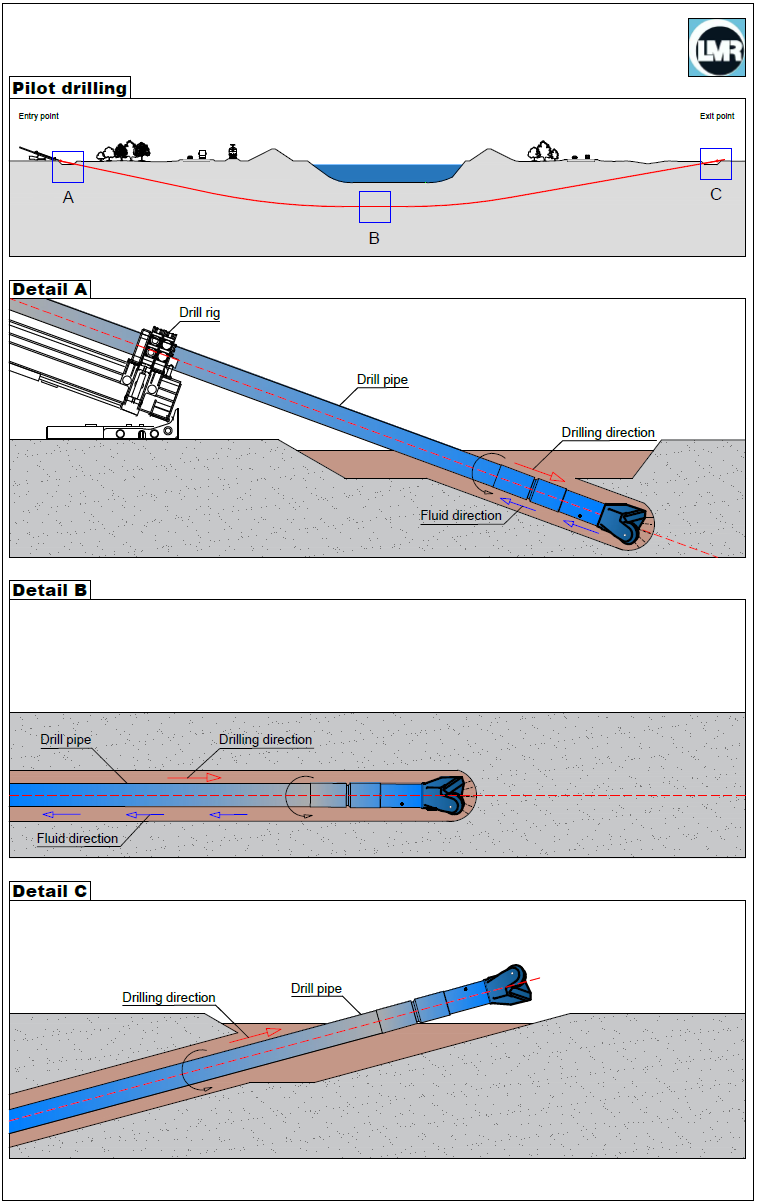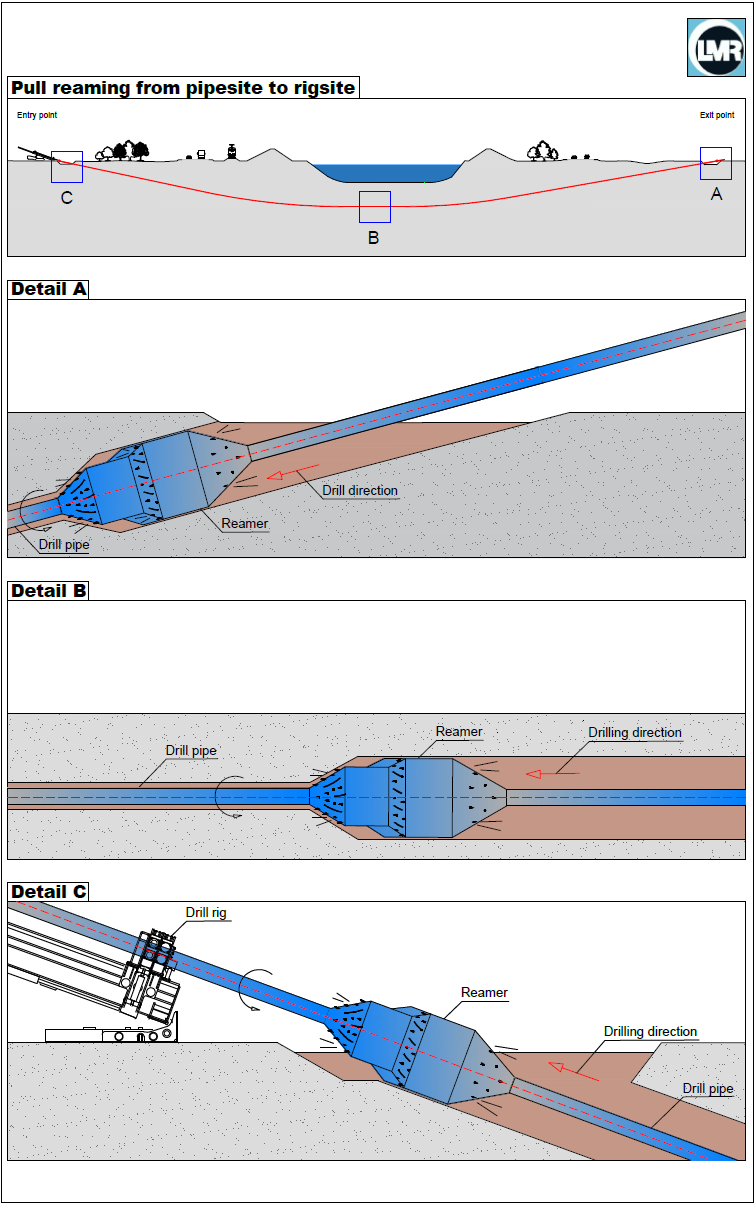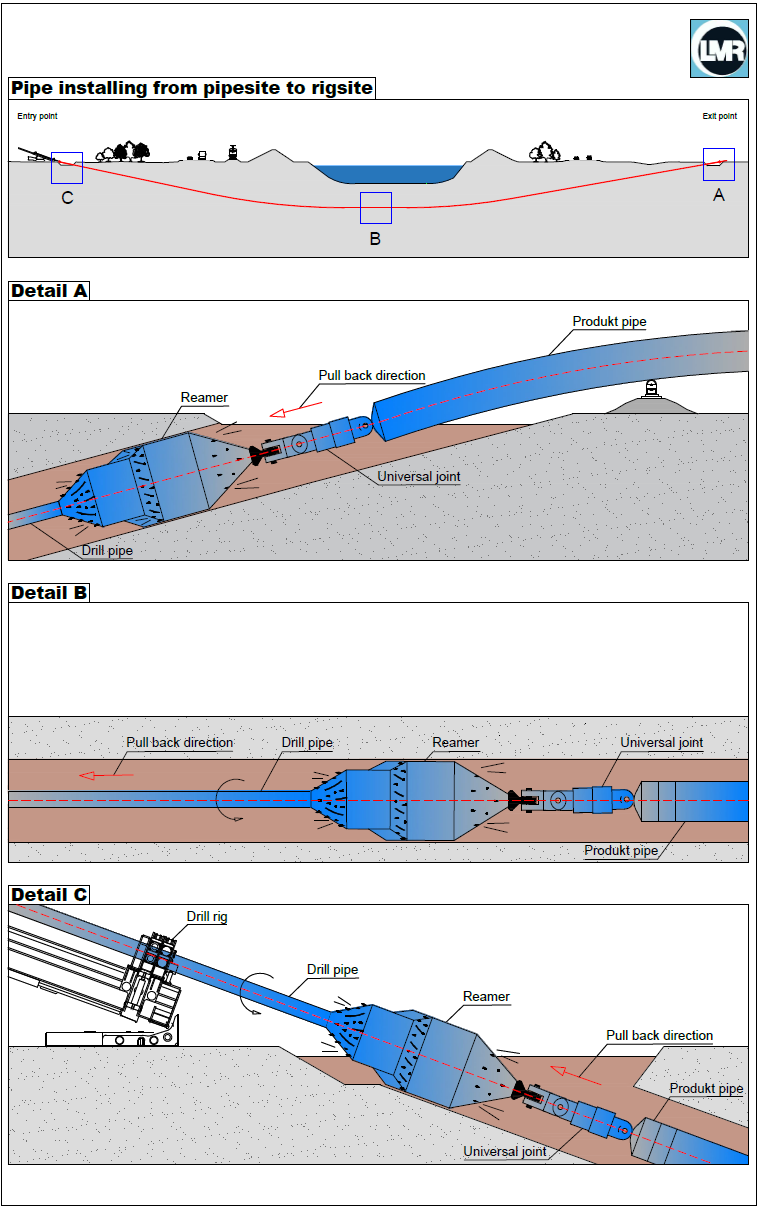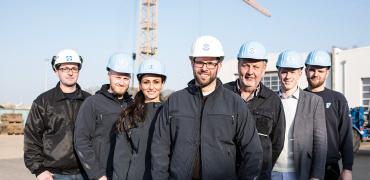The Technique
Horizontal Directional Drilling – the optimum solution for crossings of natural obstacles or artificial barriers. Accurate installation of steel or plastic pipelines and cables. Worldwide proven with crossings of up to 4600 m and 300 mm diameter, smaller lengths with 1400 mm diameter.
Quick mobilization. Compact construction site. Low installation costs. Security of pipe with increased cover. Shorter, more predictable construction schedules. Minimum maintenance costs. No interruption to shipping or traffic. Minimum environmental impact. No damage to the river bed or banks. Environmental compatibility by use of natural drilling fluids.
Pilot hole drilling
A small diameter pilot hole is drilled by directional control to a predetermined path from rig to pipe side.
Either a jet bit or a rock bit and mud-motor is used as a drilling tool in soft or hard ground. Surveying is achieved with an electronic instrument situated immediately behind the drilling tool.
Steering ability is provided by a slight bend in the pilot string between drilling tool and instrument, which is orientated while pushing the string forward.


Enlarging the hole
Pre-reaming operations are carried out to enlarge the drilled hole to a size suitable for accepting the product pipe.
A bentonite drilling fluid is circulated through the reamer in order to remove the drilled soil and to stabilize the hole. Further drill pipes are added behind the reamer.
Depending upon the pipe diameter to be installed several pre-reaming operations may be necessary, each progressively enlarging the hole.
Installing the pipe
The pull-back pipe is connected to a ‘cleaning‘ reamer which in turn connects to a swivel joint, (to prevent pipe rotation) that is attached to the pipeline towhead.
The drill rig is then used to pull the product pipe into the preformed hole.
The drilling fluid consisting of water and clay minerals will remain in the annulus and protect the pipe.

